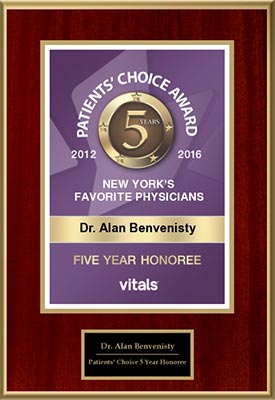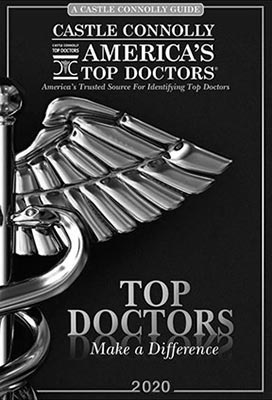What You Should Know About Aortic Stenosis

Aortic stenosis is a serious heart condition that requires attention and understanding. As a top vascular surgeon in New York City, Dr. Alan Benvenisty, MD, is committed to helping patients navigate this complex health issue. Here’s what you should know about the nature of aortic stenosis, its causes, potential dangers and available treatments.
Understanding Aortic Stenosis
Aortic stenosis occurs when the aortic valve, which sits between the heart’s left ventricle and aorta, becomes narrowed. This narrowing inhibits the flow of blood from the heart to the rest of the body, making it increasingly difficult for the heart to pump blood efficiently. As the heart works harder to pump blood through the narrowed valve, it can lead to significant complications if left unaddressed.
Causes of Aortic Stenosis
Aortic stenosis can arise from a variety of factors, including:
- Age-related calcific degeneration: The most common cause of aortic stenosis is age-related degeneration. Over time, calcium deposits accumulate on the valve, leading to stiffness and narrowing. This typically affects older adults, particularly those over 70.
- Congenital heart defect: Some individuals are born with a congenitally abnormal aortic valve, often a bicuspid valve (having two leaflets instead of the normal three). Bicuspid aortic valves can lead to earlier calcification and subsequent stenosis.
- Rheumatic fever: This inflammatory disease often results from untreated strep throat, which can damage heart valves, including the aortic valve. Rheumatic fever is not as common in developed countries due to the availability of antibiotics, but can still be a concern.
- Radiation therapy: Patients who have undergone radiation therapy for cancer treatment in the chest area may experience damage to the aortic valve over time, leading to stenosis.
The Dangers of Aortic Stenosis
The consequences of untreated aortic stenosis can be severe. As the condition progresses, patients may experience:
- Heart failure: The heart may struggle to keep up with the increased workload, leading to symptoms such as shortness of breath, fatigue and fluid retention.
- Arrhythmias: Irregular heartbeats can develop as the heart’s electrical system is affected by the pressure changes associated with stenosis.
- Sudden cardiac arrest: In severe cases, aortic stenosis can lead to a life-threatening situation known as sudden cardiac arrest, especially in patients who experience symptoms like syncope (fainting) during exertion.
- Stroke: The abnormal flow of blood through the heart can lead to the formation of blood clots, which can travel to the brain and cause a stroke.
Given these risks, early detection and monitoring of aortic stenosis are crucial.
Symptoms to Monitor
Many patients with aortic stenosis do not experience symptoms until the condition becomes severe. When symptoms do present, they may include:
- Chest pain or tightness
- Shortness of breath during physical activity
- Fatigue
- Dizziness or lightheadedness, especially when standing up or during exertion
- Heart palpitations
If you experience any of these symptoms, it is essential to consult with your healthcare provider to evaluate the condition of your heart. The American Heart Association® has an AS symptom tracker (PDF) to record your symptoms and their frequency. Print it, record your symptoms and then show it to Dr. Benvenisty at your next appointment.
Treatments for Aortic Stenosis
The treatment approach for aortic stenosis largely depends on the severity of the condition and the presence of symptoms. Options typically include:
- Monitoring: In mild cases without symptoms, regular monitoring and follow-up echocardiograms may be sufficient to track the condition’s progression.
- Medications: While no medication can cure aortic stenosis, certain drugs may help manage symptoms or associated conditions like hypertension or heart failure.
- Surgical Options: When the condition becomes severe, surgical intervention may be necessary. The most common procedures include:
- Balloon valvuloplasty: A catheter with a deflated balloon at the tip is inserted through an incision in the groin and is threaded through to the arteries of the heart. The balloon is then inflated, and the aortic valve expands.
- Aortic valve replacement: This is often the definitive treatment for severe aortic stenosis. The damaged valve is replaced with either a mechanical valve or a biologic valve.
- Transcatheter aortic valve replacement (TAVR): A less invasive option, TAVR enables valve replacement through a catheter inserted into a blood vessel, making it suitable for high-risk patients who may not be able to tolerate open-heart surgery.
Dr. Alan Benvenisty, MD, provides compassionate, patient-focused care as a renowned general and vascular surgeon in New York City. He specializes in vascular diagnosis and has a strong interest in non-surgical, minimally invasive treatments. If you or a loved one has been diagnosed with aortic stenosis or is experiencing related symptoms, contact our office today to schedule an appointment.
FAQ About Aortic Stenosis
How is aortic stenosis diagnosed?
Aortic stenosis is typically diagnosed through a combination of medical history assessment, physical examination and imaging tests such as echocardiography.
Can aortic stenosis be prevented?
While some causes of aortic stenosis cannot be prevented, maintaining a heart-healthy lifestyle—such as exercising regularly, eating a balanced diet and managing risk factors like hypertension—can help reduce the risk.
What is the prognosis for patients with aortic stenosis?
The prognosis varies depending on the severity of the condition and the treatment received. Patients who undergo successful valve replacement can experience significantly improved outcomes and a higher quality of life.
Are there lifestyle changes that can help manage aortic stenosis?
Yes, patients should focus on heart-healthy lifestyle choices, including regular exercise, a nutritious diet and avoiding smoking, to help manage symptoms and overall heart health.
How often should I see my doctor if I have aortic stenosis?
If you’ve been diagnosed with aortic stenosis, regular follow-ups with your healthcare provider are crucial for monitoring the progression of the condition. Your doctor will recommend a follow-up schedule based on your specific case.
New York Aortic Stenosis Specialist
Aortic stenosis is a serious condition that demands awareness and prompt medical care. Dr. Alan Benvenisty is dedicated to providing comprehensive care to those suffering from this illness, ensuring that patients receive the most appropriate treatments.
If you or a loved one is facing the challenges of aortic stenosis, don’t hesitate to reach out for guidance and support. Understanding your condition is the first step toward effective management and improved heart health.
Posted on behalf of
440 West 114th St, Second Floor
New York, NY 10025
Phone: (212) 523-4706
Monday & Friday 9:00 AM – 5:00 PM







